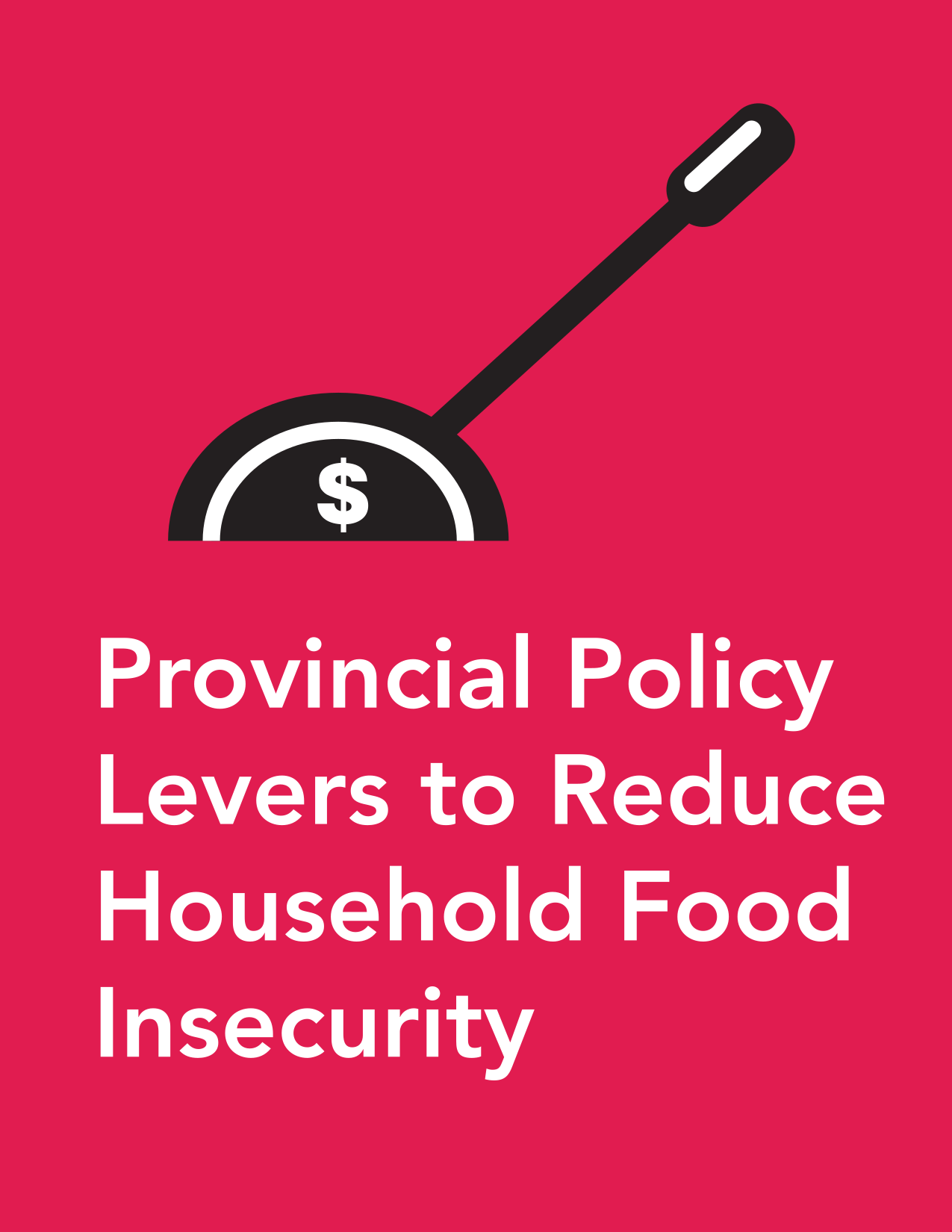Provincial Policy Levers to Reduce Household Food Insecurity
May 27, 2021
Food insecurity – the inadequate or insecure access to food due to financial constraints – is monitored by Statistics Canada through the Canadian Community Health Survey (CCHS). Based on the most recent national estimates from 2017-2018, 4.4 million Canadians, including 1.2 million children, live in food-insecure households.1
Rates of food insecurity vary considerably across the provinces and territories. Food insecurity is not just a lack of food, but rather an experience of pervasive material deprivation due to financial constraints. Provincial policy decisions play an important role in determining the food insecurity rates of provinces because many of these decisions directly impact households’ financial circumstances.
Our new study, published in Preventive Medicine, examines the effects of provincial policies and economic environments on food insecurity among households with children under 18 years of age, using data from the CCHS 2005-2018.2 We identified three policy levers that provincial governments can use to reduce the rate of food insecurity in their jurisdictions – increased minimum wage, increased welfare income, and lower income tax rates for the lowest income bracket.
Minimum wage
A one-dollar increase in minimum wage was associated with 5% lower odds of experiencing food insecurity.
Increasing minimum wage can help reduce food insecurity among workers who make up the majority for the food-insecure in Canada (65% in 2017-2018).1 Racialized workers and those relying on low-wage, short-term, part-time, or precarious work are most vulnerable.3
This finding is consistent with international research showing that employed adults are less likely to be food-insecure in countries with more generous minimum wages or collective bargaining.4
Welfare/social assistance income
A $1000 increase in annual welfare income was associated with 5% lower odds of severe food insecurity.
Severe food insecurity is far more prevalent among households relying on social assistance1 and is associated with the greatest negative health outcomes,5, 6 greatest increased risk of premature death,7, 8 and greatest increased healthcare costs.9
Increasing social assistance rates can help protect families from the most toxic level of food insecurity.
Income tax rate for the lowest-income households
A one-percentage-point increase in the income tax rate for the lowest-income households was associated with 9% higher odds of food insecurity.
Lowering the income tax rate for the lowest-income households can reduce food insecurity by improving their financial circumstances.
Food insecurity in Canada is tightly linked to income. Households with the lowest incomes are the most likely to be food-insecure and more severely so.
In addition to provincial policies related to income redistribution, labour market conditions also affect food insecurity rates.2 A one-percentage-point increase in unemployment was associated with 5% higher odds of experiencing food insecurity. We found no association between food insecurity and changes in the price of food or energy or the percentage of children with childcare space available to them.
Not only do food insecurity rates vary across provinces, but so do government commitments towards addressing this serious public health problem. Prince Edward Island is the only jurisdiction to have set explicit targets for food insecurity reduction.10 Some provinces have opted out of monitoring food insecurity in the years when it was optional.
Given the tremendous burden on people’s health and the healthcare needs, food insecurity is a drain on provincial health care budgets.9 Provincial governments should make food insecurity reduction a priority and recognize that their decisions about minimum wage, welfare benefits, and income tax rates for the lowest income households are food security policies.
References
- Tarasuk V, Mitchell A. Household Food Insecurity in Canada, 2017-2018 Internet. Toronto, ON: Research to identify policy options to reduce food insecurity (PROOF); 2020. Available from: https://proof.utoronto.ca/resources/proof-annual-reports/household-food-insecurity-in-canada-2017-2018/
- Men F, Urquia ML, Tarasuk V. The role of provincial social policies and economic environments in shaping food insecurity among Canadian families with children. Preventive Medicine 2021;148:106558. Available from: https://www.sciencedirect.com/science/article/pii/S0091743521001420
- McIntyre L, Bartoo AC, Emery JH. When working is not enough: food insecurity in the Canadian labour force. Public Health Nutr 2014;17(1):49–57. Available from: https://www.cambridge.org/core/product/identifier/S1368980012004053/type/journal_article
- Reeves A, Loopstra R, Tarasuk V. Wage-Setting Policies, Employment, and Food Insecurity: A Multilevel Analysis of 492 078 People in 139 Countries. Am J Public Health 2021;111(4):718–25. Available from: https://ajph.aphapublications.org/doi/full/10.2105/AJPH.2020.306096
- Tarasuk V, Mitchell A, McLaren L, McIntyre L. Chronic physical and mental health conditions among adults may increase vulnerability to household food insecurity. The Journal of Nutrition 2013;143(11):1785–93. Available from: https://doi.org/10.3945/jn.113.178483
- Jessiman-Perreault G, McIntyre L. The household food insecurity gradient and potential reductions in adverse population mental health outcomes in Canadian adults. SSM – Population Health 2017;3:464–72. Available from: https://www.sciencedirect.com/science/article/pii/S2352827316301410
- Men F, Tarasuk V. Severe food insecurity associated with mortality among lower-income Canadian adults approaching eligibility for public pensions: a population cohort study. BMC Public Health 2020;20(1):1484. Available from: https://bmcpublichealth.biomedcentral.com/articles/10.1186/s12889-020-09547-y
- Men F, Gundersen C, Urquia ML, Tarasuk V. Association between household food insecurity and mortality in Canada: a population-based retrospective cohort study. CMAJ 2020;192(3):E53–60. Available from: https://www.cmaj.ca/content/192/3/E53
- Men F, Gundersen C, Urquia ML, Tarasuk V. Food insecurity is associated with higher health care use and costs among Canadian adults. Health Affairs 2020;39(8):1377–85. Available from: http://www.healthaffairs.org/doi/10.1377/hlthaff.2019.01637
- PROOF. Prince Edward Island: The first jurisdiction to set explicit targets for reducing food insecurity. Internet. PROOF. Available from: https://proof.utoronto.ca/prince-edward-island-the-first-jurisdiction-to-set-explicit-targets-for-reducing-food-insecurity/

